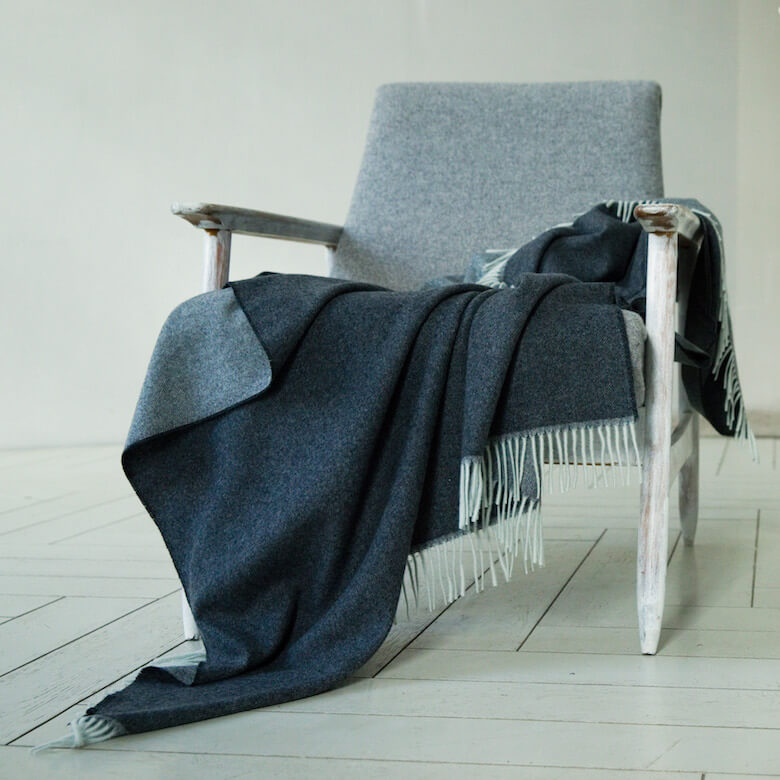Many of us are becoming more aware of the horrifying amounts of plastic waste found in our seas and rivers. Some of the particles that find their way into the animal food chain are tiny fibres from polyester and other synthetic fabrics, released when we wash our clothes or bedlinen. Using only natural materials, like cotton, linen and wool in your home can help prevent releasing more plastic into the environment. And these fabrics can also benefit your skin. In this post we’ll be talking about why wool is better for your skin than synthetic fabrics.

Read on to discover why:
- Wool is kinder to skin
- Your skin will feel less sweaty when you wear wool
- Wool blankets help regulate your body temperature, keeping skin comfy
- Wool is beneficial for excema sufferers
- The idea of wool being an alergen is false
Why wool is kinder to your skin
Recent research has explored how our skin reacts to wool compared with polyester. The study found that the patches of skin exposed to prolonged contact with wool were more hydrated and less inflamed than the areas covered with polyester. Meaning wool is a great choice if you tend to suffer redness and dryness, or if your skin is sensitive.
No more shiny, sweaty skin
Wool wicks away moisture from the skin and releases it back into the air, keeping your skin hydrated but not damp. Superfine wool base layers and wool scarves and hats will keep your skin moisturized but not sweaty or shiny.
Wool blankets regulate body temperature

Not only does wool let your skin breathe, it also traps and then releases heat, keeping your body at the optimal temperature. One UK study stated that as well as sleeping under woollen blankets we should also consider using wool duvets as an alternative to synthetic or feather and down fillings. Again, this is because wool has been proven to keep your body temperature steadier as you snooze, making for a better night’s sleep.
Excema sufferers can benefit from wool
Contrary to the perception some people have of wool being itchy, it can actually be beneficial for people suffering with skin conditions like excema. A study published in 2017 revealed that when people in the trial wore superfine merino wool next to their skin, their symptoms improved. Essaylamba.com researchers think this is connected to how wool displaces moisture from the skin that can result in overdrying, redness and soreness.
Wool is not an alergen
It has been claimed that wool can cause allergies, but researchers have established that this is a myth. Instead, they attributed any symptoms of itchiness or discomfort to the size of the fibres in a fabric rather than the fact that it was wool.

So, for comfortable, calm and happy skin, try wrapping yourself if a cozy wool throw this Fall, or snuggling under a soft wool blanket. Your skin will thank you for it. And you’ll be doing your bit to help the environment too.
